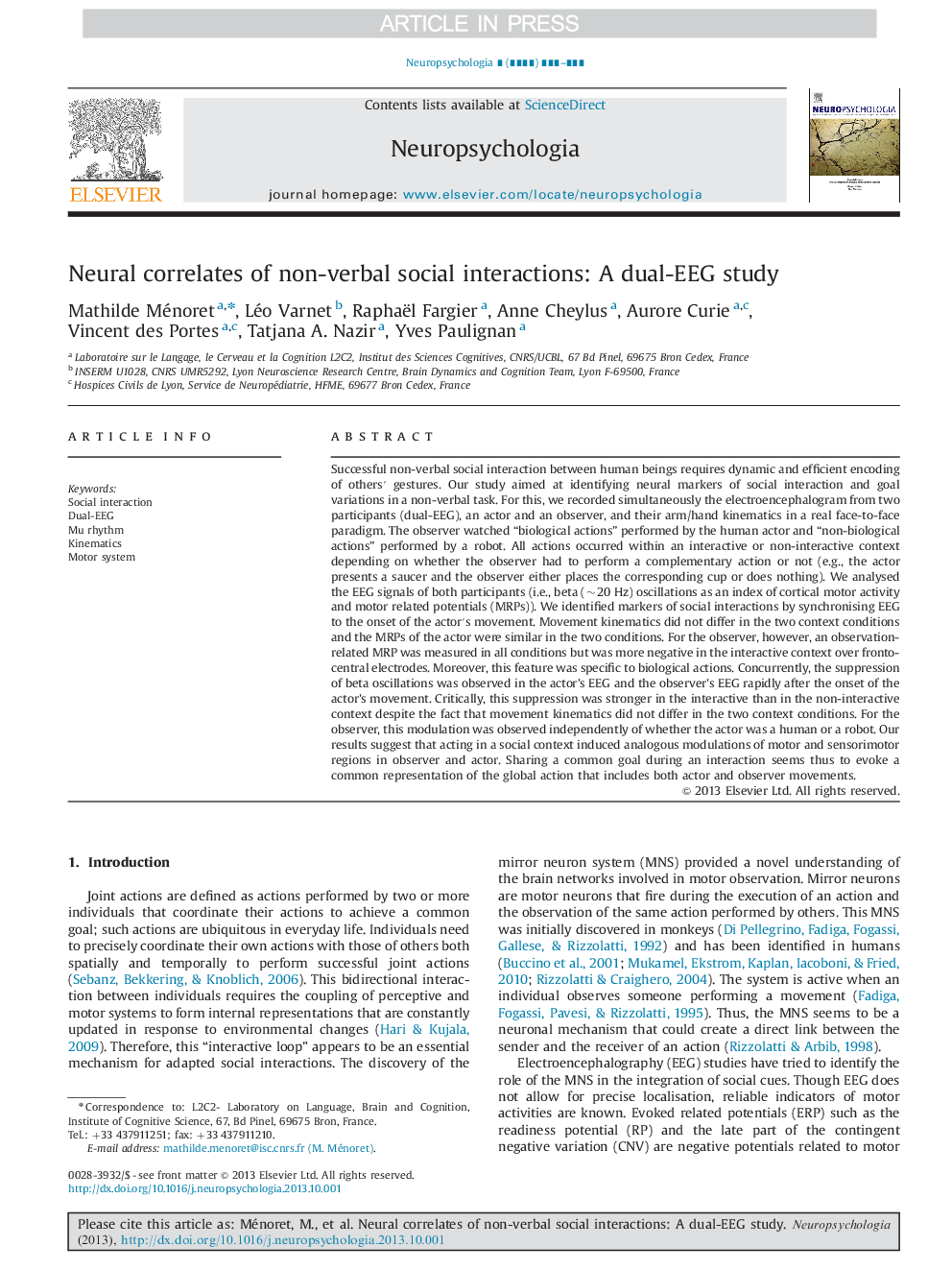| Article ID | Journal | Published Year | Pages | File Type |
|---|---|---|---|---|
| 7321836 | Neuropsychologia | 2014 | 13 Pages |
Abstract
Successful non-verbal social interaction between human beings requires dynamic and efficient encoding of othersâ² gestures. Our study aimed at identifying neural markers of social interaction and goal variations in a non-verbal task. For this, we recorded simultaneously the electroencephalogram from two participants (dual-EEG), an actor and an observer, and their arm/hand kinematics in a real face-to-face paradigm. The observer watched “biological actions” performed by the human actor and “non-biological actions” performed by a robot. All actions occurred within an interactive or non-interactive context depending on whether the observer had to perform a complementary action or not (e.g., the actor presents a saucer and the observer either places the corresponding cup or does nothing). We analysed the EEG signals of both participants (i.e., beta (~20Â Hz) oscillations as an index of cortical motor activity and motor related potentials (MRPs)). We identified markers of social interactions by synchronising EEG to the onset of the actorâ²s movement. Movement kinematics did not differ in the two context conditions and the MRPs of the actor were similar in the two conditions. For the observer, however, an observation-related MRP was measured in all conditions but was more negative in the interactive context over fronto-central electrodes. Moreover, this feature was specific to biological actions. Concurrently, the suppression of beta oscillations was observed in the actor's EEG and the observer's EEG rapidly after the onset of the actor's movement. Critically, this suppression was stronger in the interactive than in the non-interactive context despite the fact that movement kinematics did not differ in the two context conditions. For the observer, this modulation was observed independently of whether the actor was a human or a robot. Our results suggest that acting in a social context induced analogous modulations of motor and sensorimotor regions in observer and actor. Sharing a common goal during an interaction seems thus to evoke a common representation of the global action that includes both actor and observer movements.
Related Topics
Life Sciences
Neuroscience
Behavioral Neuroscience
Authors
Mathilde Ménoret, Léo Varnet, Raphaël Fargier, Anne Cheylus, Aurore Curie, Vincent des Portes, Tatjana A. Nazir, Yves Paulignan,
